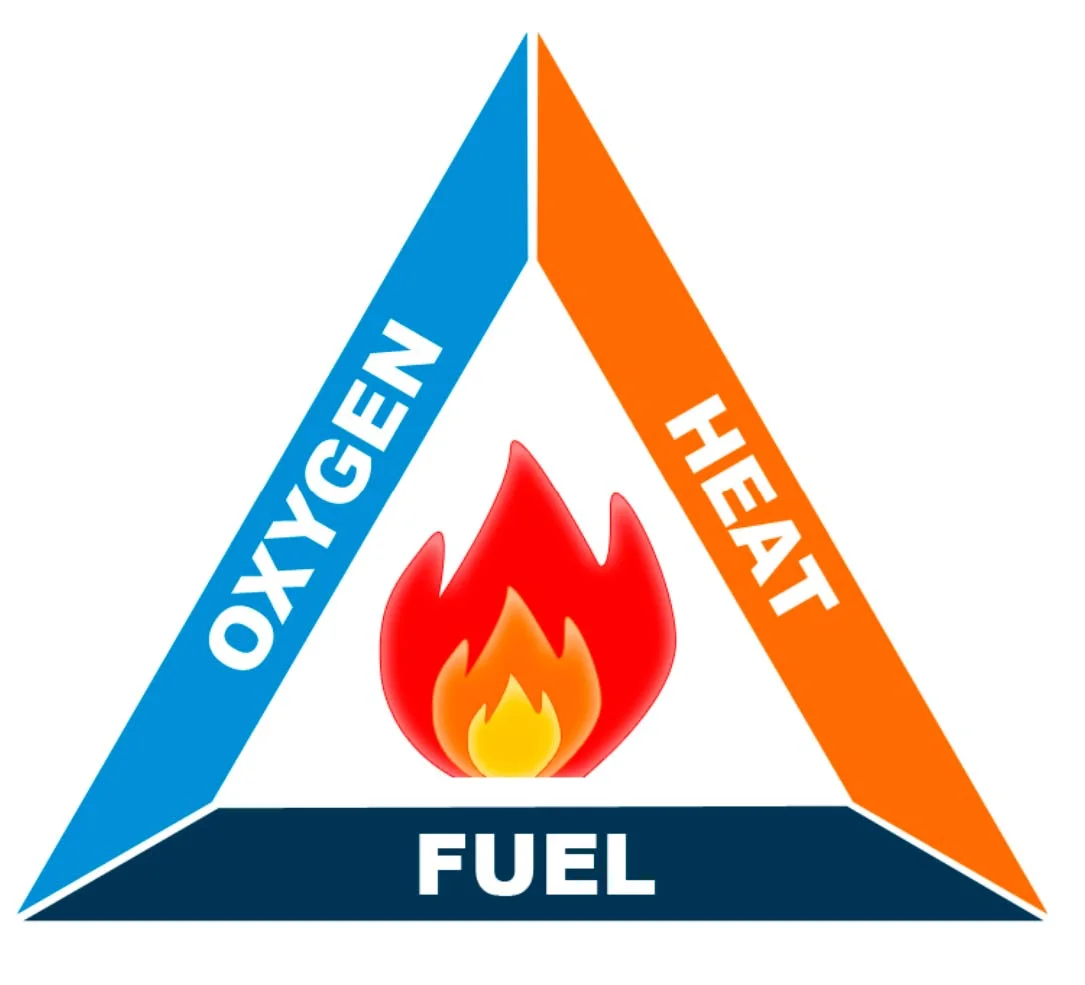
Written by mike on March 21, 2023
Updated on: 20 July 2023
Fire Classes and Fire Suppression
Fire: The Complexity and Danger
Fire, also commonly known as combustion, might seem at first glance to be a simple subject, but it really isn’t. Daily, we harness and control fire and combustion in many ingenious ways, for example, to power our various means of transport, keep the lights on, or smelt steel among countless other ways we take for granted or are simply unaware of.
But far too many people, unfortunately, also find themselves its victim, be it from the growing number of severe wildfires or accidents either in the home or elsewhere.
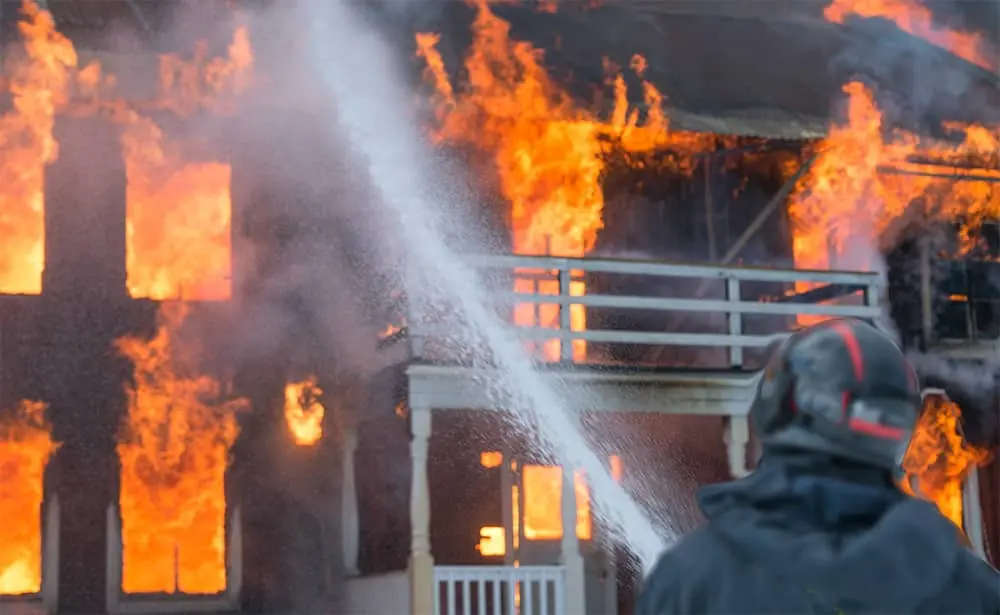
For an indication of how serious the problem is, according to the Nation Fire Prevention Association (NFPA), “in 2020, local fire departments responded to an estimated 1.4 million fires in the United States, the equivalent of one every 23 seconds! These fires caused 3500 civilian fire deaths and 15200 reported civilian fire injuries. Property damage was estimated at $21.9 billion”.
To put that more into perspective as far as home-owners are concerned, of that 1.4 million only about a quarter, some 360000, occurred in home properties. But these were responsible for an eye-opening 2590 (74%) of civilian deaths and 11552 (76%) of injuries.
Fire in the Home Environment
With these kinds of statistics, it’s clear that every homeowner has to recognize the dangers of fire and take mitigating measures and precautions. This could include being adequately prepared to deal with any eventuality, such as the safe storage of any generator fuels and having sufficient means to suppress a fire in, for example, the kitchen.
So here, we focus on providing information centered around the home environment where the ability to deal effectively with a fire incident speedily could make the difference between a successful outcome and a preventable a tragedy.
Fire Suppression Equipment
There is a dizzying variety of fire extinguishers on the market, which reflects the enormous complexity of firefighting. But not all are aimed at the home user. However, among the available models for the home, multi-purpose fire extinguishers are considered by many to be a homeowner’s best choice. This is because the various types of fire one normally encounters in the home require a specific and appropriate response. And one of the most important benefits of choosing multi-purpose extinguishers is not having to waste vital time in trying to identify:
- the cause of the fire, and
- what’s burning
before being able to choose a specific class of fire extinguisher to deal with it.

Just imagine a short-circuit in an overloaded outlet which results in some furniture beginning to smolder and burn. In a situation of sheer panic, an immediate reaction might be to focus on the furniture as the main threat and end up being fatally electrocuted by mistakenly using a water-based extinguisher.
A multi-purpose fire extinguisher could prevent this from happening.
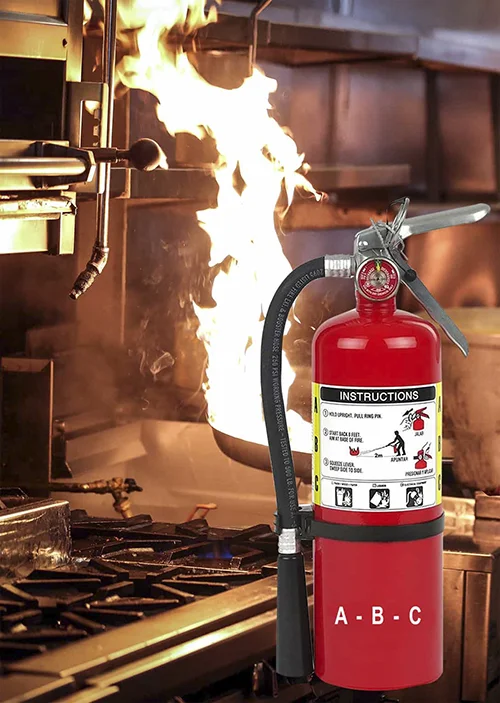
But before looking at the different types of fire extinguisher, and why a multi-purpose model is most likely to be the preferred option, it may be helpful to first briefly mention the Fire Triangle. Thereafter we can go on to see how fires have come to be classed and who is responsible for deciding these classifications.
The Fire Triangle
If, perhaps like many, you have never heard of the Fire Triangle, this is often used to provide an immediately understandable visual illustration of the three components (oxygen, heat, and fuel) that must coincide for combustion to take place. In some more recent descriptions, there is also a fourth element: the chemical reaction, which is basically the fire feeding itself. In this scenario, it is called a Tetrahedron (meaning instead of a triangle, a triangular pyramid made up of four triangular faces). Absent any one of the three components and a fire will be unable to continue burning.

Oxygen
One way of removing oxygen from the equation is by using a carbon dioxide fire extinguisher. Yet another method is to smother the fire with a fire blanket, of which there are various types. All of these types of blankets are made either of a fire-resistant material, such as fiberglass, or other materials that have been treated with flame retardants.
Heat
A common and very effective way of removing heat from a fire is by dousing it with water. You may have seen quite a few fire hydrants in your neighborhood. Where they are positioned is an indication of where the water main passes underneath the ground. These hydrants have multiple nozzles for connection to fire trucks to provide firefighters with constant access to water, which is their most common means of fighting a fire.
However, water should never be used against an electrical fire because of the risk of electrocution. Nor should it be used against oil fires as the two elements are unable to mix and will cause droplets of burning oil to be scattered all over the place, worsening and extending any fire.
Fuel
The use of fire-resistant materials is an effective means of removing the fuel part of the equation. These are mandatory, for example, in furniture where filling materials and cover fabrics contained in any article of upholstered furniture and added to reupholstered furniture, must meet the fire retardant requirements set out in TB 117-2013.
It’s worth mentioning how this relates to an operating portable generator, which must be kept well away from any combustible material in its immediate vicinity because of the fire risk posed by, for example, extremely hot exhaust gases.
Underwriters Laboratories (UL)
This independent research organization, which has an international reach, carries out work on safety science research and standards development, and certifies all kinds of products. In the case of fire extinguishers and their associated components, it provides a widely recognized UL Mark that is directly related to fire classes.
The UL Mark indicates that products have met its standards for safety and performance and can therefore be relied upon to work on different classes of fire specified by the manufacturer.
Classes of Fire
In the US system of classification there are five classes of fire A, B, C, D, and K, but only the first three fall within a home setting. Classes D and K relate more to commercial and industrial environments rather than the home, but we include them here for completeness.
The classifications are based on the kinds of material that fuel the flames and provide the basis for an appropriate UL Mark. The five classes are as follows:
Class A Fires
These fires are of paper, wood, materials, plastics, and rubbish which are in the main organic and contain carbon compounds. They can be suppressed using water, foam, or multi-purpose dry powder, but care needs to be taken in certain circumstances to ensure that smoldering embers do not reignite if and when they again come into contact with oxygen.
Class B Fires
Fires involving flammable liquids, such as oil, gasoline, solvents, and other oil-based products like paints used in the home. These liquids tend to have a high carbon content making them highly combustible. The most effective suppressant is normally foam. Water, except in the form of a mist, should never be used against a Class B fire.
Class C Fires
Fires caused by an “energized electrical power source”, and usually provoked by a short circuit, faulty wiring, power extension damage, or overloaded outlets. Water and water-based foams should NEVER be used to suppress this class of fire because it can lead to serious burns and other injuries from electric shock and fatality from electrocution resulting from current passing through the body via conduction.
Class D Fires
You will be hard pressed to find Class D fires in the home as they involve flammable metals, the most common of which include magnesium and titanium, but can also involve other metals such as potassium, zirconium, and lithium. This kind of fire is found in industrial, commercial, and even laboratory environments. Water fire extinguishers cannot be used to suppress these fires. They can, in fact, make them much worse both by intensifying the flames and dispersing the fire to adjacent areas. Extinguishers containing dry powder in the form of graphite (powder) and sodium chloride (granular) are commonly used to fight this class of fire for which people require special training to use them effectively.
Class K Fires
This class of fire involves vegetable and animal fat-based cooking oils and greases that are generally found in commercial kitchens. Care must be taken not to mistakenly resort to the use of Class B fire extinguishers because, despite being rated for flammable liquids such as petroleum and gases, they are unable to deal with the extremely high temperatures of Class K fires. Instead, wet chemical extinguishers are used to contain them using a water mist made up of an alkaline mixture that chemically creates a blanket to suppress the flames through oxygen starvation.
Classes A, B and C Fire Extinguishers for the Home
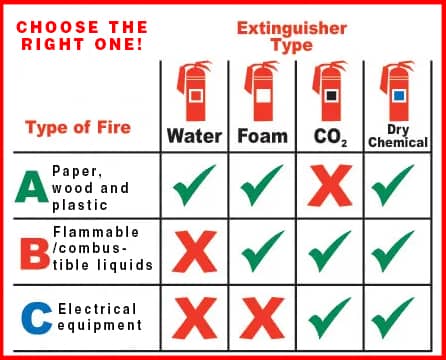
Fire extinguishers for the home are designed generally to be relatively small and lightweight for easy and rapid access. A downside is that they have a limited reach and discharge their contents very quickly, in many cases in just a matter of seconds.
Their primary purpose is to rapidly suppress a small fire and prevent it from spreading and developing into an uncontrollable blaze. To this end, the key is immediate action using an appropriate fire extinguisher. But remember, at the first sign of a fire you must order the immediate and safe evacuation of everyone in its vicinity, designating someone to raise the alarm with the fire department while you attempt to put out the fire. If it cannot be controlled immediately with your home fire extinguishers, your personal safety is paramount so you must evacuate before possibly becoming overcome by the fumes and smoke.
While fire extinguishers may be formulated to suppress specific classes of fire, many suitable for the home have also been designed to be used against more than one class of fire and have the appropriate UL Mark displayed on the cylinder. These are the multi-purpose models and will have a variation of the A-B-C UL Mark. According to the manufacturer Kidde, the NFPA recommends at least one 2-A:10-B:C rated fire extinguisher (or higher) as a primary unit for each level of the home. And, of course, Fire/Smoke alarms should be installed in multiple locations throughout the home to provide early warning.
Carbon Dioxide Fire Extinguishers
One common type is the carbon dioxide (CO2) fire extinguisher. They are relatively more expensive compared to some other types, possibly because of the need for the cylinder to be further reinforced to house the gas under very high pressure.
CO2 is inflammable and denser than air and works both by cutting off the supply of oxygen and by reducing the heat resulting from its extremely cold discharge.
They are highly effective against fires involving flammable liquids. However, because these extinguishers discharge their contents with such force, they should never be used against, for example, fires involving cooking oil in the kitchen because the blast could shoot burning oil into the surrounding areas, extending and intensifying the fire.
In addition, they should not be used in the suppression of flammable combustible solids because these materials can continue to smolder and reignite once they again come into contact with surrounding oxygen.
The CO2 fire extinguisher will generally have a UL Mark of B, C and are normally useless against Class A fires. Nevertheless, they do have the benefit of being safe to use where either sensitive electronics or an electrical fault are involved because they leave no residue behind.
One example of a CO2 variant is the Kidde Pro 5, which has a UL Classification of 5-B:C (see immediately below for an explanation of what the number preceding the B means). In this case, the classification of 5 indicates the area in square feet in which the extinguisher is designed to be effective, and here the Pro 5 has a range of up to 8 feet and a discharge time of 7 to 9 seconds.
Fire Extinguisher Class Ratings
- Class A Size Ratings – between 1 and 40. The rating (number) indicates how much water is contained in the cylinder, with the number 1 being equivalent to 1.25 gallons. Multiple the number that precedes the “A” by 1.25 and you have the equivalent amount of water. For example, 4A would indicate 6 gallons.
- Class B Size Ratings – between 1 and 640. This rating (number) is an estimate of how many square feet the extinguisher can effectively cover. 20B would indicate 20 square feet.
- There are no numerical ratings for any of the other fire classes (C,D and K).
We also include information on the numbers placed before the Classes A and B in our selection of fire extinguishers.
Water-Based Fire Extinguishers
Filled with water or a water-based agent, these are generally for Class A fires only. They are probably the most common type of extinguisher. They are environmentally friendly, containing just water which is forced out by the release of a gas-filled cartridge placed within the high-pressure cylinder.
These extinguishers suppress fires by removing heat. They must never be used against oil-based fires, or electrical fires because of potentially catastrophic and lethal consequences such use would entail.
An example of a water-based model is the Amerex 240, 2.5 Gallon Water Class A Fire Extinguisher. This has a UL Rating of 2-A, a 55-second discharge, and an effective range of 45-55 feet.
Foam-Based Fire Extinguishers
Although not as commonly available as other types of fire extinguisher, these foam models are designed specifically for suppressing Class A and B fires. Class B fires might, for example, include left-over paints stored away, or oil and grease for a car in the garage. They could also include hand gels, which have nowadays become so much more prevalent in the home environment.
Foam-based extinguishers act a lot faster than those using water in suppressing fires. They are usually more expensive than the water variety and, if available, can help to reduce the risk of selecting the wrong extinguisher in an emergency. But since extinguishers capable of fighting fires of the Classes A, B and C exist, there seems to be little reason to choose one of these foam-based extinguishers.
Dry Powder Fire Extinguishers
These fire extinguishers are filled with a dry chemical compound, such as sodium bicarbonate powder, and can extinguish almost all types of fires. The powder sits within a high-pressure cylinder and is forced out by the release of a gas (carbon dioxide) from a cartridge inside the cylinder. These models are suitable for suppressing Classes A, B and C fires.
It is the type of multi-use/multi-purpose fire extinguisher homeowners should have on hand. Good examples include the Amerex B500 and B402, though there are multiple other models available at different price points.
Other Types of Fire Extinguisher
There are other types of fire extinguisher. For example, there are those which operate with “wet chemicals”, often of potassium variants. They work by spraying gently a fine mist of potassium salts to avoid the spread the burning oil or fat. The spray creates a soapy film on the surface of the material burning, removing the heat and starving the fire of oxygen. This type of extinguisher is more suited to commercial kitchens.
Multi-Purpose Fire Extinguishers
Most multi-purpose fire extinguishers generally fall into the A-B-C classes, and this is most likely the type of model most suited for the home. Some are disposable while others are refillable (professionally). They come in different sizes and weights. While the largest models offer a greater suppression capability, they are heavy and potentially unwieldy.
Conclusion
We hope the foregoing information is both informative and useful. We have put together a selection of fire extinguishers, many of them multi-purpose, and fire suppressors with the aim of helping you choose one or the other.
